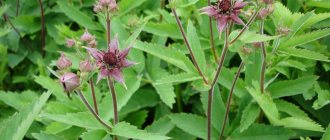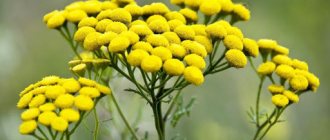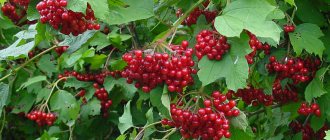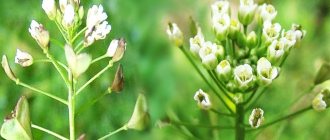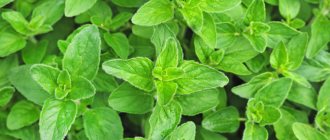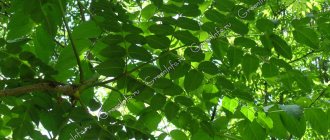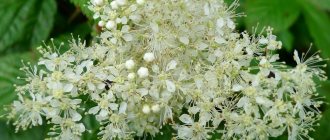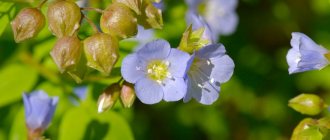It is difficult to imagine a herb that heals broken bones, but it exists in nature. This is comfrey, or larkspur, a powerful perennial plant from the Borage family. This article contains information about what comfrey looks like, how and why it is used in folk medicine, how to properly grow it in a personal plot, and who should not take plant preparations.
Comfrey photo
Comfrey medicinal description
Comfrey medicinal appearance.
Photo: Yandex.Pictures The comfrey genus includes 25 species of large perennial herbaceous plants. There are 6 species of plants growing in our country. Comfrey belongs to the borage family.
It is one of the first to look out of the ground, first forming a rosette of large, rough leaves. And already in May, flowering shoots with many buds appear.
The stem of comfrey is single, thick, reaching a height of more than one meter. The stems and leaves are covered with stiff hairs.
There are quite a lot of leaves on the stem; they are oblong, large, dense, and rough. The lower leaves have long winged petioles, and the upper ones are sessile.
The flowers of the plant are collected in bell-shaped corollas of purple color. Comfrey blooms from May until autumn. At the beginning of flowering, the corolla is purple or violet. Gradually it turns blue or blue, and sometimes becomes white.
The rhizome of the plant is used for medicinal purposes. It is quite thick, short, almost black.
Special instructions for the use of the drug Comfrey officinalis
Due to the fact that the plant is poisonous, it is necessary to be careful when prescribing it internally, strictly adhere to the indicated dosages and use it under the supervision of a physician. All parts of the comfrey plant contain poisonous alkaloids cynoglosine and consolidine, which in high doses paralyze the central nervous system, so long-term use can cause complications. External use is indicated only for intact skin. Use is contraindicated during pregnancy.
List of pharmacies where you can buy Comfrey:
- Moscow
- Saint Petersburg
Where does comfrey grow?
Young leaves of comfrey.
Photo: Pixabay The plant’s range extends into Siberia and Kazakhstan; it is a European species. You can find comfrey along river banks, in wet meadows, damp places, and in deciduous forests throughout the European part of Russia.
Previously, the plant was planted in every peasant's yard, and they took care of it so that it would grow well. The grass was considered a lifesaver for many ailments.
Comfrey is one of the most undemanding garden plants. If you plant it just once, then it is quite difficult to get rid of it. It grows well in open sunny places and in the shade, on fertile and completely uncultivated soils.
It reproduces by rhizomes, so it can very soon become an aggressive weed. Removed and discarded rhizomes quickly begin to grow. Pieces of durable material dug around it will help protect the plant from growing. They should be dug into the ground to a depth of at least 20 centimeters.
Using comfrey in collections
Pyoderma
Hyperthyroidism
Contraindications and possible side effects of comfrey
Due to the toxicity of the plant, it is necessary to strictly observe the indicated dosages and use it under the supervision of a physician (the alkaloids cynoglossin and consolidine in large doses paralyze the central nervous system).
Medicinal properties
A complex of biologically active substances was found in the rhizomes of the plant: alkaloids, tannins, essential oil, mucus.
The rhizome and, less commonly, leaves and stems are used for medicinal purposes. Preparations with its plant materials have antimicrobial, anti-inflammatory, hemostatic, wound-healing, astringent, enveloping and anti-sclerotic effects.
The antiulcer and antitumor effects of comfrey root are being studied. It has been established that the use of infusion and decoction of the plant increases the tone of the muscles of the intestines and uterus.
In folk medicine, comfrey is known for its wound-healing properties. It accelerates the healing of fractures and restores damaged periosteum.
From the Botanical Dictionary of Hermetic Medicine: “Comfrey stops bleeding in wounds and vomiting. Useful for ulcers in the lungs, for broken bones and rheumatism.”
Preparation and storage of comfrey
Comfrey roots have healing properties. They can be harvested either in spring or autumn. The roots are dug up, thoroughly cleared of soil, and washed in water. Clean roots are cut into pieces 15-20 cm long and dried. To dry, you need to spread the roots in a room with a good flow of fresh air. Final drying is carried out in dryers at low temperatures, not higher than 40 degrees.
Comfrey roots are stored in fabric bags, cardboard boxes or in tightly closed containers, in rooms with low air humidity. Subject to storage conditions, raw materials retain their healing properties for up to three years.
In some cases, comfrey leaves and flowers collected during the flowering period are used as medicinal raw materials (recipes for their use, in particular, are available in German and French medicine).
Comfrey application
In popular belief, comfrey is credited with the unusual property of protecting against theft and attracting money. It is difficult to say whether the plant helps with this, but it did help travelers: it helped with bruises and fractures.
The anti-inflammatory, emollient and enveloping effects of comfrey are used in cosmetics and dermatology. It is highly valued for its softening and moisturizing effect on the skin, stimulates wound healing and renewal of epidermal cells.
- The root powder can be applied to bleeding wounds.
- If a bone is broken, the sore spot should be covered with crushed fresh root. Dry roots must first be moistened.
- Fresh juice helps with a runny nose.
- The juice of the root or stem stops nosebleeds.
Indications for use
According to the manuscripts of medieval herbalists and ethnographic sources, comfrey was very popular and was widely used to treat many diseases. In Galicia, the roots were used to treat the initial stage of pulmonary tuberculosis. The Hutsuls bathed children in a decoction of the roots for rheumatic pain. Children 1-5 years old were given fresh plant juice to drink to strengthen their immunity. In Volyn, a decoction of the roots in milk was used to treat peptic ulcers of the stomach and duodenum, and a decoction in water was used for rinsing with stomatitis. In Podol, crushed roots were applied in the form of applications to frostbitten areas of the skin and burns. In Polesie, tincture of borage roots was used to treat multiple sclerosis (as part of complex therapy).
Modern folk medicine uses the plant for chronic bronchitis, pulmonary tuberculosis, chronic catarrh of the respiratory organs with copious sputum production, hemoptysis, bleeding and paralysis.
Comfrey preparations reduce abdominal pain, improve digestion, and enhance epithelization of the affected mucous membrane of the digestive tract. They are used for the following diseases of the gastrointestinal tract: dysentery, diarrhea, chronic intestinal catarrh, gastric ulcer.
Externally, an aqueous solution from comfrey is used for sciatica, inflammation of the veins and periosteum, dislocations, bone fractures, pain in amputation stumps, osteomyelitis, osteoporosis, bone tuberculosis, bone cancer.
Comfrey infusion is used externally for purulent lesions of soft tissues (felons, abscesses, phlegmons), thrombophlebitis, osteomyelitis, furunculosis, carbuncles, mastitis, hardening of the mammary glands in nursing mothers. Fresh crushed root or juice from it will help with wounds and ulcers, as well as nosebleeds.
In the form of gargles, borage is used for sore throats, diseases of teeth and gums, and in the form of douching (decoction of leaves) - for fungal vaginitis.
A decoction of comfrey roots with honey water is useful for kidney diseases. The plant mixed with honey and vinegar is recommended to be taken for diseases of the nervous system.
The root will help quench your thirst; to do this, you just need to chew it in your mouth.
A decoction of the root in milk is an effective anti-inflammatory agent used for colds and pulmonary tuberculosis.
An infusion of fresh roots and a mucous decoction are recommended to be taken for malignant neoplasms of various localizations.
The plant extract cleanses, softens and heals the skin, quickly restores cells, moisturizes the skin, giving it a healthy appearance. The decoction is used for cracks in the skin, for hair care and baldness, for the care of dehydrated and dry skin, as well as large-pore skin.
In South America and some regions of Africa, comfrey is used as a folk contraceptive.
Traditional medicine recipes
Photo: Pixabay
For the treatment of gastritis, dysentery, bronchitis
- Pour a tablespoon of chopped fresh root into 0.5 liters of boiling water. Place on the stove and keep on low heat for 5 minutes. Leave for an hour, strain and add boiled water to the original volume. For gastritis, dysentery, bronchitis, take 1/2 of a warm infusion 3-4 times a day, half an hour before meals.
The course of treatment is until the cough or discomfort from the gastrointestinal disease stops.
External tumors
- Mix 2 tablespoons of fresh chopped rhizomes with an equal amount of unsalted lard. Keep the mixture in a low boiling water bath for half an hour. Then cool slightly and add 0.5 teaspoons of camphor oil to the resulting mass.
Apply the ointment to the tumor, cover the top with cellophane and secure with a bandage. Change the dressing daily.
Treatment of fractures
- Apply fresh comfrey rhizome, crushed and mashed until the juice is released, to the fracture site. You can use dry raw materials, but it should be steamed with boiling water, kept under a lid and cooled slightly.
Treatment of erysipelas and thrombophlebitis
- Mix 2 tablespoons of chopped fresh rhizomes and the same amount of lard. Keep the mixture in a water bath (low boiling) for half an hour.
Apply the ointment to damaged areas of the skin or veins carefully, without pressing or massaging.
Hair loss remedy
- Pour 0.5 liters of boiling water into one tablespoon of chopped comfrey rhizomes and one teaspoon of stems and leaves. Place on fire and bring to a boil. Leave for 2 hours, strain and squeeze out the raw materials.
Rub the infusion into the scalp half an hour before washing your hair, and the infusion can also be used as a rinse once a week.
Compress for acne skin
- Pour a glass of boiling water over 2 tablespoons of chopped fresh roots. Put on fire and keep for 10 minutes. Leave in a thermos for 2 hours, then strain.
Soak gauze in the broth and apply it to your face, leave for 15 minutes, then remove the gauze. Do not wipe your face. Apply compresses regularly: 3–5 times a week.
Medicines, method of use of comfrey and dosage
Ready-made comfrey ointment can be found among pharmaceutical preparations.
Single comfrey is used in folk medicine for colds, diarrhea, flatulence, chronic gastritis, diaper rash, burns, and bleeding.
- Infusion of comfrey roots: 2 teaspoons of raw material, pour 200 ml of boiling water, leave for 6-8 hours, then filter. The swollen roots are re-filled with 200 ml of boiling water and filtered after 20-30 minutes. The first and second portions of the infusion are poured together. The resulting amount of infusion is taken 1-2 tablespoons every 2-3 hours.
- Decoction of comfrey roots: 10 g of raw material is boiled in 200 ml of water over low heat for 10 minutes, then filtered and squeezed. Take 1 dessert spoon every 2 hours.
- Ointment from comfrey roots: 1 part of the crushed root is poured with 4 parts of melted pork fat, kept in a steam bath for 30 minutes, filtered in a liquid state. Store in the refrigerator.
How to prepare comfrey root for treating joints?
To prepare medicine for joints, you need to properly prepare the root.
- Only the side parts of the root - crispy and fleshy - should be collected. They contain the largest amount of viscous nutrients. It is better to use fresh root immediately or dry it for later use.
- To do this, you need to wash it, cut it to length, and air dry it. Then transfer the root to a dark place to dry.
It is important to prepare comfrey correctly
- The drying temperature should not exceed 60°C - otherwise it will destroy the beneficial substances of the comfrey. Avoid exposure to moisture - comfrey roots quickly become moldy.
Description
This plant can grow up to 1 m in height. The rhizome is black, short and thick. The straight, powerful stem is faceted below and branched above. The leaves of the plant are oblong-ovate in shape, green on top, and have a slightly grayish tint below. The upper leaves on the stem are slightly sessile, while the lower leaves are larger in size and sit on long petioles. Comfrey has regular and drooping flowers. They are located at the top of the stem and branches and look like curls. The five-part calyxes of the flower are smaller than the corolla itself, and the corolla itself has a tubular-bell-shaped appearance. It comes in a variety of colors: purple, violet or white. Comfrey blooms from July to September. The fruit of this plant looks like a triangular shiny black nut, which disintegrates during ripening. The plant reproduces vegetatively and with the help of seeds.
